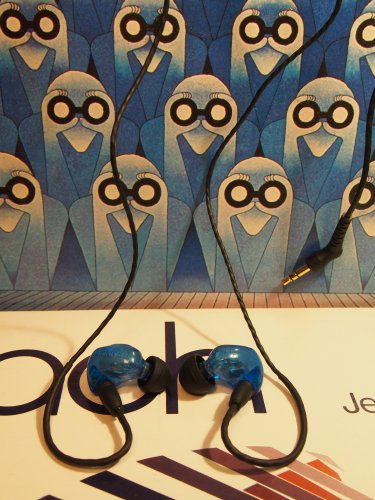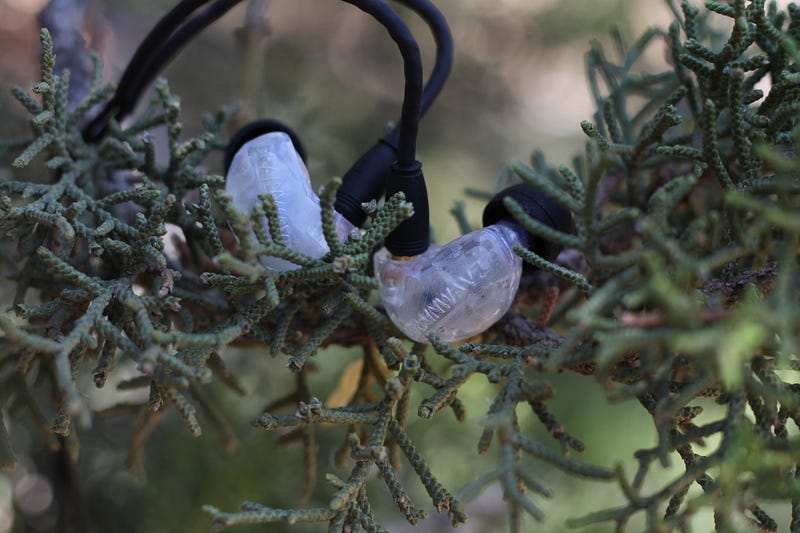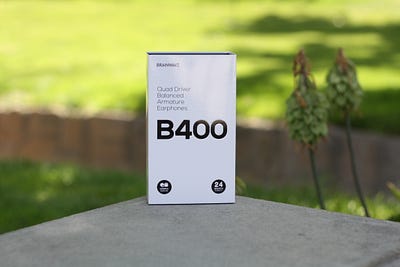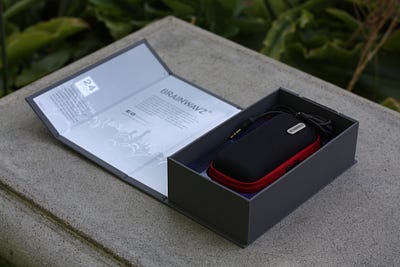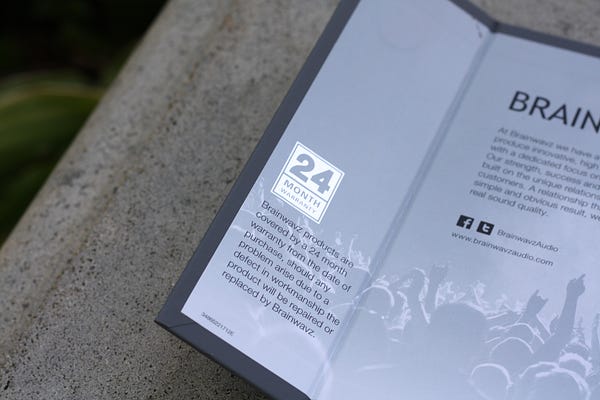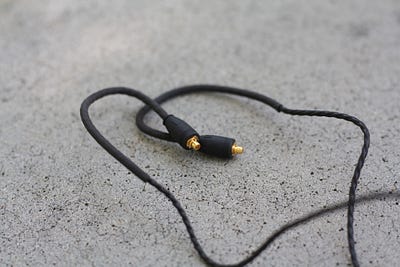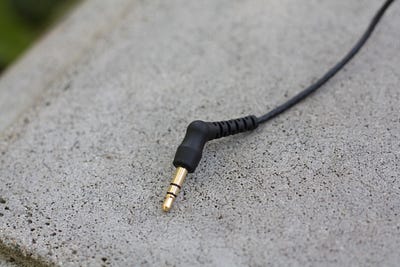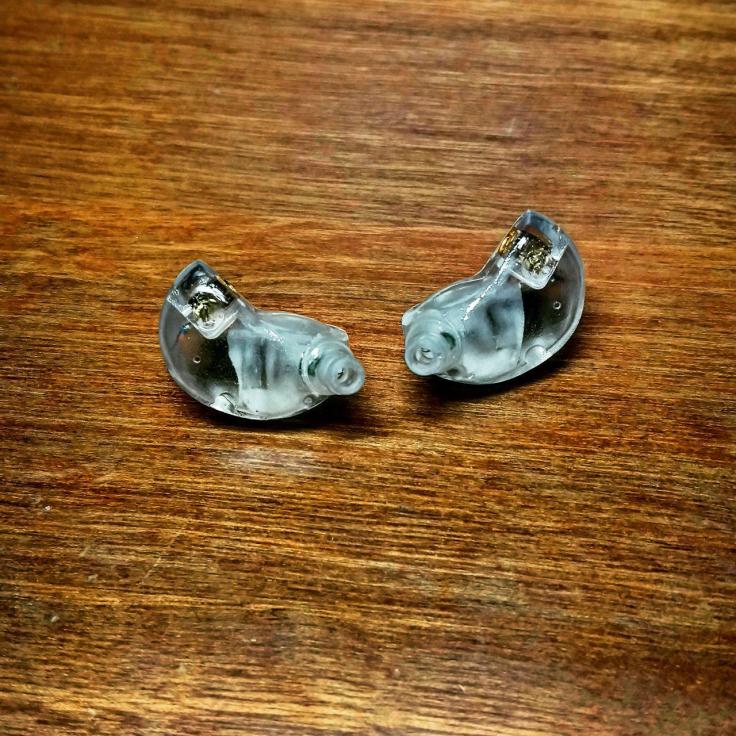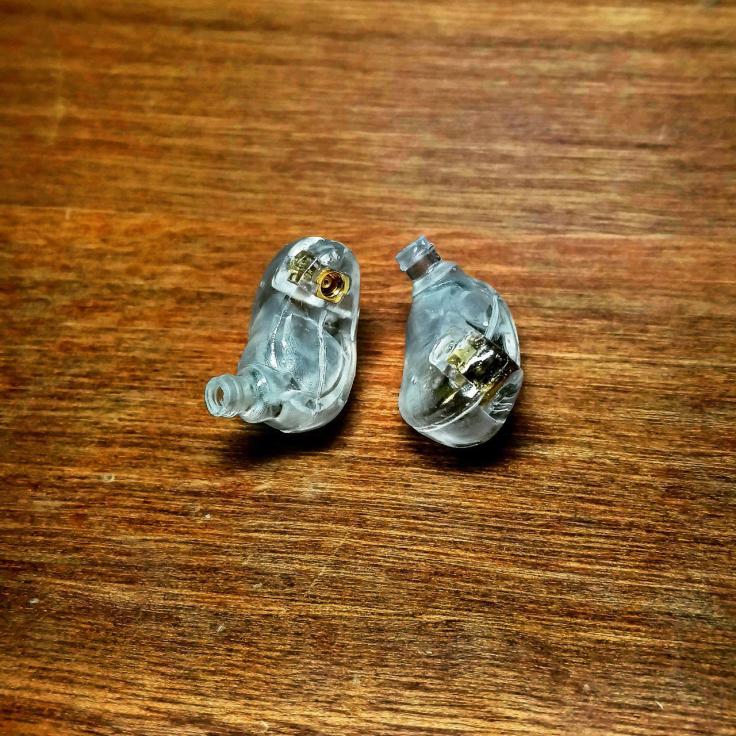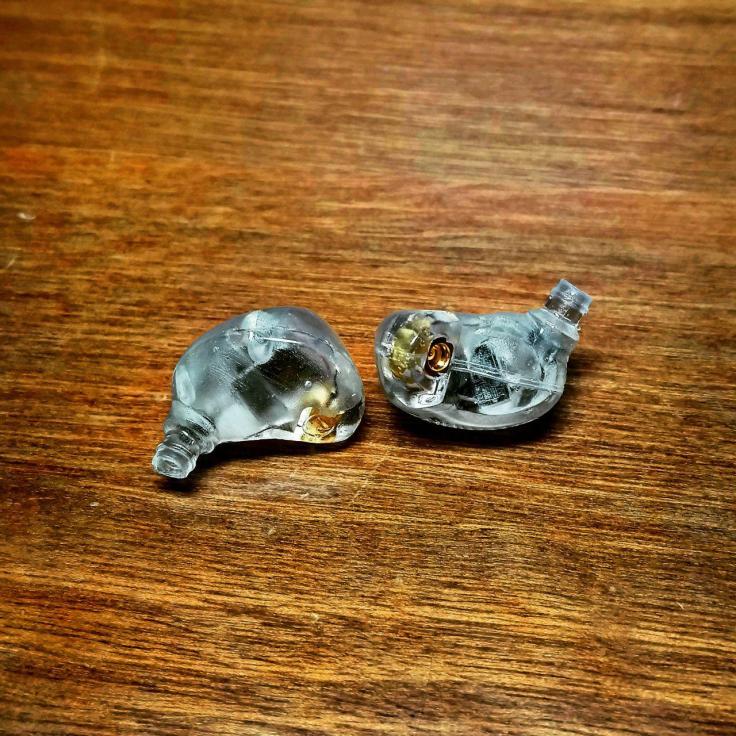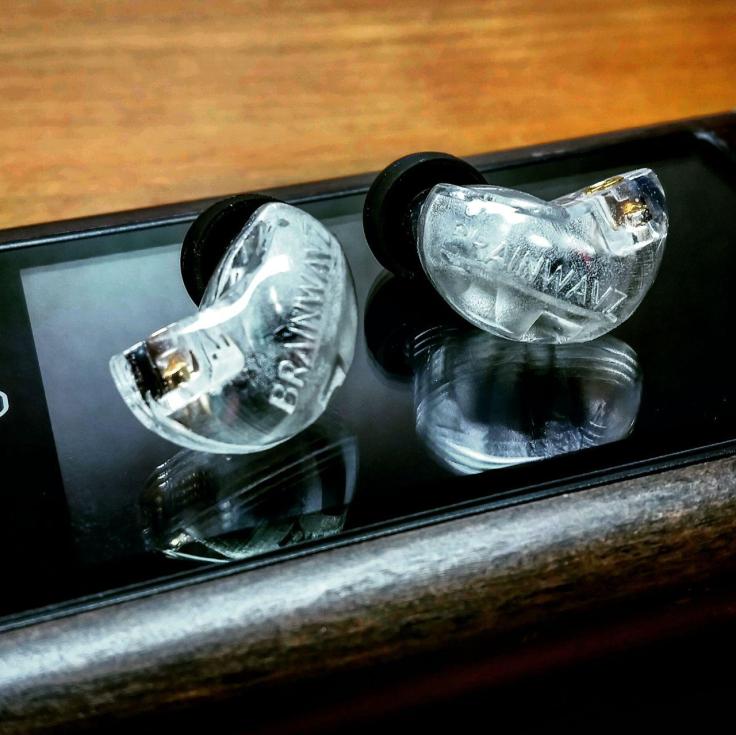this review originally posted at www.hifitrends.com
Amazing soundstage and imaging put you in your own private concert.
My first experience with Brainwavz was a few years back when I read a glowing review about their Delta earbuds, a product considered by some to be the best sounding earphones under $50. The Delta, with its combination of well thought out features and generous accessory package, all for about $25, represents their strategy of providing a lot for a little.
The B200 Dual Balanced Armature IEM ($120), which came out in 2017, and the B400 Quad Balanced Armature IEM which came out last year at $200, follow a similar value/price proposition, albeit at higher price points with different driver tech. The B400, like the Delta, comes with a nice accessory package, along with good sound and features for the price, but at a whole other (higher, of course) level of performance.
Build/Features:
The B400 is a pro-style IEM, which as its name implies, has four Balanced Armature drivers within each earpiece. The earpieces have 3D printed translucent housings with standard MMCX connectors. This means cables are replaceable, and there are in fact two 1.3m cables that come standard in the box. One has an inline remote with a mic plus volume and track controls, and the other is a straight cable with a 45-degree angle plug at the end.
The remote worked flawlessly with my LGV40, but I did have a bugaboo with the buttons, which were so narrow that it was hard to press them. However, once pressed they felt very solid and responsive, and the metal housing of the remote looked very slick and polished.
Overall, both cables are of good quality, with nice flex, and a sturdy black jacket running the length of them. Both cables have pre-formed tubes slipped over the wire on the earphone side, which hooks over the ears comfortably and keeps the IEMs securely in place. Brainwavz also has upgrade cables available on their website.
The B400 has a very simple clean look, and comes in six translucent colors including the Aqua color I have. I like the minimalist look and the earpieces are quite small considering the amount of drivers inside. The combination of their smooth exterior and what Brainwavz calls the “ergonomic shape” makes them extremely comfortable. I wore them for hours with very minimal discomfort.
As mentioned earlier, they come with a pretty nice accessory package which includes the standard S,M,L silicone ear tips, some Comply T-100 foam tips, a mic/remote cable, the straight cable, a nice black/red zip up hard case which is something of a signature for Brainwavz, plus two velcro cable wraps, and a shirt clip. I was impressed by the quality of all the accessories.
Noise isolation is very good, especially since they don’t fit very deep, which is another testament to the ergonomics of the earpieces. They are also very easy to drive, sounding great with my LG V40 phone. However, I actually thought they sounded even better with some good amplification, responding favorably to the output from the iFi xDSD headphone amp/DAC.
Sound:
All my sound tests were done with TIDAL Hi-Fi, streaming from the LG V40 phone, and from the HP ENVY x360 laptop connected to a iFi xDSD headphone amp/DAC. The xBass and 3D+ sound enhancements were turned off on the xDSD.
So when you talk about having four balanced armatures in an IEM, of course you have some high expectations regarding the sound. While it sounds like a slam dunk to have all those separate drivers handling the different parts of the audio spectrum, it’s actually difficult to properly blend the sound coming from all those little tiny speakers in such a small space. That being said, Brainwavz has done a great job with the tuning on these earphones. I gravitate towards warm headphones, and the B400 fall within that category.
They are mid-centric, with a tad bit of rolloff at both extremes of the audioband, which gives them a very smooth, easygoing sound. I’m very sensitive to bright earphones, so I actually liked this sound signature. This doesn’t mean there is a lack of detail, there is plenty of detail here from top to bottom, especially in the mids, but there is also nice detail in the presence region which keeps the sound clear up top. However, if you like a lot of extra sparkle at the top end, or extreme bass you should probably listen to these before you buy.
I personally like headphone/earphones that get the mids right since that is where a good part of the musical information is, and these definitely do that. Vocals are awesome, sounding very delicate and transparent. When I listened to Luciana Souza’s “Down To You” from her album The New Bossa Nova, her vocals were crisp without any harshness, and I also loved how the strings were reproduced with tons of vibrancy.
Live recordings also really shine on these earphones. The multiple drivers layer sounds so well, creating a wide and deep soundstage that made me feel like I was in the room when I listened to “How Deep Is Your Love” from PJ Morton’s Gumbo Unplugged. The background singers popped out of the background off to the left, and PJ was up front and center singing and directing the action. But the magic happens when the featured singer Yebba explodes from the right, bringing the performance home. PJ’s piano playing also sounds so natural. The separation of instruments and performers gives you almost a 3D sound, it is so realistic.
Conclusion:
The B400s sound quality alone easily puts them at the top of the heap for $200 earphones. You would have to spend a lot more to get much better sound than what they offer. The deep soundstage is nothing short of amazing, and the imaging is very focused and precise. With a good live recording, they actually give you a “you are there” performance. Throw in great comfort and build quality, and you have a definite winner here.
Amazing soundstage and imaging put you in your own private concert.
My first experience with Brainwavz was a few years back when I read a glowing review about their Delta earbuds, a product considered by some to be the best sounding earphones under $50. The Delta, with its combination of well thought out features and generous accessory package, all for about $25, represents their strategy of providing a lot for a little.
The B200 Dual Balanced Armature IEM ($120), which came out in 2017, and the B400 Quad Balanced Armature IEM which came out last year at $200, follow a similar value/price proposition, albeit at higher price points with different driver tech. The B400, like the Delta, comes with a nice accessory package, along with good sound and features for the price, but at a whole other (higher, of course) level of performance.
Build/Features:
The B400 is a pro-style IEM, which as its name implies, has four Balanced Armature drivers within each earpiece. The earpieces have 3D printed translucent housings with standard MMCX connectors. This means cables are replaceable, and there are in fact two 1.3m cables that come standard in the box. One has an inline remote with a mic plus volume and track controls, and the other is a straight cable with a 45-degree angle plug at the end.
The remote worked flawlessly with my LGV40, but I did have a bugaboo with the buttons, which were so narrow that it was hard to press them. However, once pressed they felt very solid and responsive, and the metal housing of the remote looked very slick and polished.
Overall, both cables are of good quality, with nice flex, and a sturdy black jacket running the length of them. Both cables have pre-formed tubes slipped over the wire on the earphone side, which hooks over the ears comfortably and keeps the IEMs securely in place. Brainwavz also has upgrade cables available on their website.
The B400 has a very simple clean look, and comes in six translucent colors including the Aqua color I have. I like the minimalist look and the earpieces are quite small considering the amount of drivers inside. The combination of their smooth exterior and what Brainwavz calls the “ergonomic shape” makes them extremely comfortable. I wore them for hours with very minimal discomfort.
As mentioned earlier, they come with a pretty nice accessory package which includes the standard S,M,L silicone ear tips, some Comply T-100 foam tips, a mic/remote cable, the straight cable, a nice black/red zip up hard case which is something of a signature for Brainwavz, plus two velcro cable wraps, and a shirt clip. I was impressed by the quality of all the accessories.
Noise isolation is very good, especially since they don’t fit very deep, which is another testament to the ergonomics of the earpieces. They are also very easy to drive, sounding great with my LG V40 phone. However, I actually thought they sounded even better with some good amplification, responding favorably to the output from the iFi xDSD headphone amp/DAC.
Sound:
All my sound tests were done with TIDAL Hi-Fi, streaming from the LG V40 phone, and from the HP ENVY x360 laptop connected to a iFi xDSD headphone amp/DAC. The xBass and 3D+ sound enhancements were turned off on the xDSD.
So when you talk about having four balanced armatures in an IEM, of course you have some high expectations regarding the sound. While it sounds like a slam dunk to have all those separate drivers handling the different parts of the audio spectrum, it’s actually difficult to properly blend the sound coming from all those little tiny speakers in such a small space. That being said, Brainwavz has done a great job with the tuning on these earphones. I gravitate towards warm headphones, and the B400 fall within that category.
They are mid-centric, with a tad bit of rolloff at both extremes of the audioband, which gives them a very smooth, easygoing sound. I’m very sensitive to bright earphones, so I actually liked this sound signature. This doesn’t mean there is a lack of detail, there is plenty of detail here from top to bottom, especially in the mids, but there is also nice detail in the presence region which keeps the sound clear up top. However, if you like a lot of extra sparkle at the top end, or extreme bass you should probably listen to these before you buy.
I personally like headphone/earphones that get the mids right since that is where a good part of the musical information is, and these definitely do that. Vocals are awesome, sounding very delicate and transparent. When I listened to Luciana Souza’s “Down To You” from her album The New Bossa Nova, her vocals were crisp without any harshness, and I also loved how the strings were reproduced with tons of vibrancy.
Live recordings also really shine on these earphones. The multiple drivers layer sounds so well, creating a wide and deep soundstage that made me feel like I was in the room when I listened to “How Deep Is Your Love” from PJ Morton’s Gumbo Unplugged. The background singers popped out of the background off to the left, and PJ was up front and center singing and directing the action. But the magic happens when the featured singer Yebba explodes from the right, bringing the performance home. PJ’s piano playing also sounds so natural. The separation of instruments and performers gives you almost a 3D sound, it is so realistic.
Conclusion:
The B400s sound quality alone easily puts them at the top of the heap for $200 earphones. You would have to spend a lot more to get much better sound than what they offer. The deep soundstage is nothing short of amazing, and the imaging is very focused and precise. With a good live recording, they actually give you a “you are there” performance. Throw in great comfort and build quality, and you have a definite winner here.


